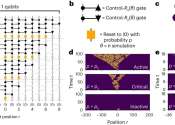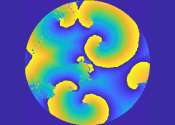Nature Physics, is a monthly, peer reviewed, scientific journal published by the Nature Publishing Group. It was first published in October 2005 (volume 1, issue 1). The Chief Editor is Alison Wright, who is a full-time professional editor employed by this journal. The impact factor for Nature Physics in 2010 is 18.423, according to Journal Citation Reports.
Research paper formats include letters, full length articles, review articles, news, views, physics research highlights, commentaries, book reviews, and correspondence.
The main focus of Nature Physics pure and applied physics research, encompassing core physics disciplines and broad topical coverage that is related to these core disciplines. Hence, subject areas cover an exploration and investigation of nature and substances that exist in the world and the universe, from atomic to cosmological scales. This encompasses defining and describing observations, interactions, and forces which occur in nature and, hence, in substances. Such descriptions may include their effect on, or within, a given natural system. More broadly, it is the general analysis of nature, conducted in order to understand how the universe behaves.
- Publisher
- Nature Publishing Group
- Website
- http://www.nature.com/nphys/index.html
Some content from Wikipedia,
licensed under CC BY-SA









